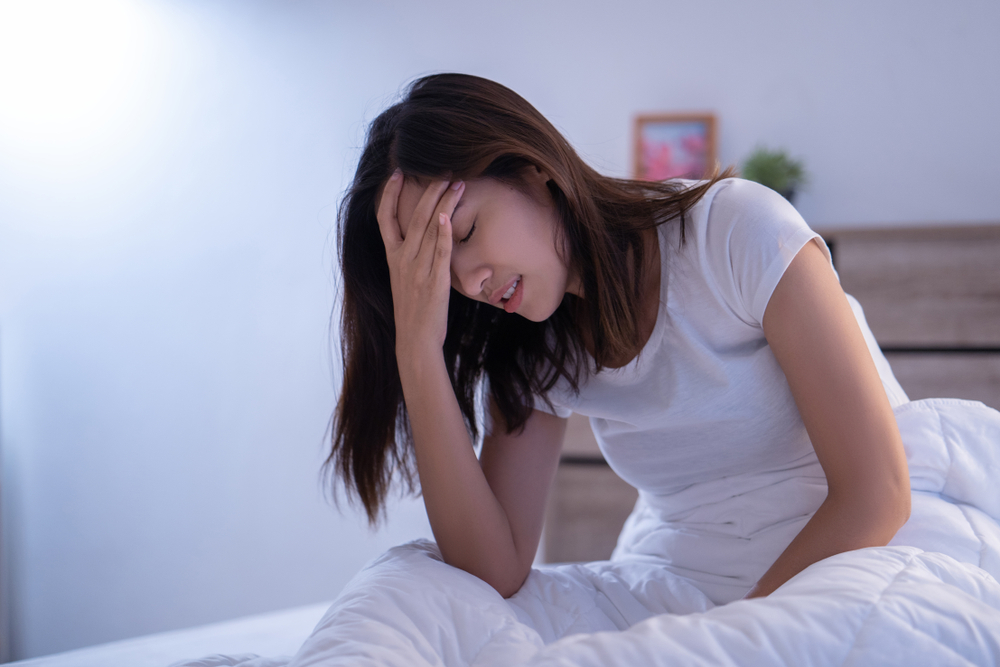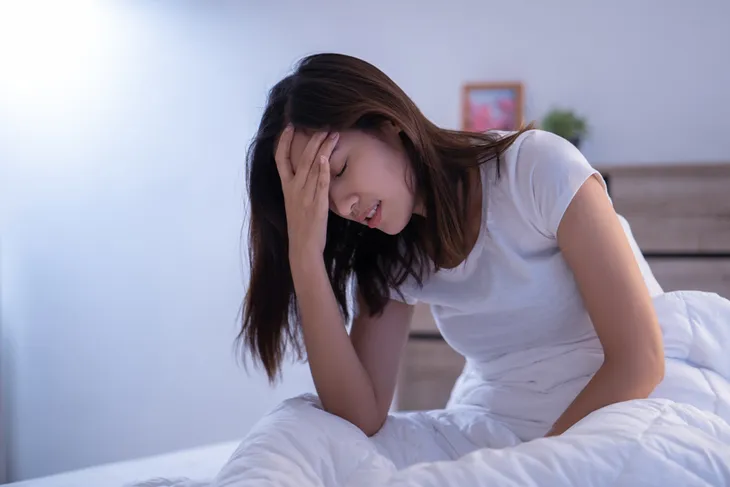Migraine headaches currently affect more than one billion people across the globe and are the second-leading cause of disability worldwide. Nearly one-quarter of U.S. households have at least one member who suffers from migraines. An estimated 85.6 million workdays are lost as a result of migraine headaches each year.
Yet many who suffer with migraine dismiss their pain as simply a bad headache. Rather than seeking medical care, the condition often goes undiagnosed, even when other incapacitating symptoms occur alongside the pain, including light and sound sensitivity, nausea, vomiting and dizziness.
Researchers have discovered that genetics and environmental factors play a role in the condition of migraine. They happen when changes in your brainstem activate the trigeminal nerve, which is a major nerve in the pain pathway. This cues your body to release inflammatory substances such as CGRP, short for calcitonin gene-related peptide. This molecule, and others, can cause blood vessels to swell, producing pain and inflammation.
For some, medication has its limits
A migraine can be debilitating. Those who are experiencing one are often curled up in a dark room accompanied by only their pain. Attacks can last for days; life is put on hold. The sensitivity to light and sound, coupled with the unpredictability of the disease, causes many to forego work, school, social gatherings and time with family.
Numerous prescription medications are available for both the prevention and treatment of migraine. But for many people, conventional treatment has its limitations. Some people with migraine have a poor tolerance for certain medications. Many can’t afford the high cost of the medicines or endure the side effects. Others are pregnant or breastfeeding and can’t take the medications.
However, as a board-certified neurologist who specializes in headache medicine, I’m always amazed at how open-minded and enthusiastic patients become when I discuss alternative options.
These approaches, collectively, are called complementary and alternative medicine. It might be surprising that a traditionally trained Western doctor like me would recommend things like yoga, acupuncture or meditation for people with migraine. Yet in my practice, I value these nontraditional treatments.
Research shows that alternative therapies are associated with improved sleep, feeling better emotionally and an enhanced sense of control. Some patients can avoid prescription medications altogether with one or more complementary treatments. For others, the nontraditional treatments can be used along with prescription medication.
These options can be used one at a time or in combination, depending on how severe the headache and the cause behind it. If neck tension is a contributor to the pain, then physical therapy or massage may be most beneficial. If stress is a trigger, perhaps meditation would be an appropriate place to start. It is worth talking to your provider to explore which options may work best for you.
Mindfulness, meditation and more
Because stress is a major trigger for migraines, one of the most effective alternative therapies is mindfulness meditation, which is the act of focusing your attention on the present moment in a nonjudgmental mindset. Studies show that mindfulness meditation can reduce headache frequency and pain severity.
Another useful tool is biofeedback, which enables a person to see their vital signs in real time and then learn how to stabilize them.
For example, if you are stressed, you may notice muscle tightness, perspiration and a fast heart rate. With biofeedback, these changes appear on a monitor, and a therapist teaches you exercises to help manage them. There is strong evidence that biofeedback can lessen the frequency and severity of migraine headaches and reduce headache-related disability.
Yoga derives from traditional Indian philosophy and combines physical postures, meditation and breathing exercises with a goal of uniting the mind, body and spirit. Practicing yoga consistently can be helpful in reducing stress and treating migraine.
Manipulation-based therapy
Physical therapy uses manual techniques such as myofascial and trigger-point release, passive stretching and cervical traction, which is a light pulling on the head by a skilled hand or with a medical device. Studies show that physical therapy with medication was superior in reducing migraine frequency, pain intensity and pain perception over medications alone.
By lowering stress levels and promoting relaxation, massage can decrease migraine frequency and improve sleep. It may also reduce stress in the days following the massage, which adds further protection from migraine attacks.
Some patients are helped by acupuncture, a form of traditional Chinese medicine. In this practice, fine needles are placed in specific locations on the skin to promote healing. A large 2016 meta-analysis paper found acupuncture reduced the duration and frequency of migraines regardless of how often they occur. Acupuncture benefits are sustained after 20 weeks of treatment.
What’s also fascinating is that acupuncture can change the metabolic activity in the thalamus, the region of the brain critical to pain perception. This change correlated with a decrease in the headache intensity score following acupuncture treatment.
Vitamins, supplements and nutraceuticals
Herbal supplements and nutraceuticals, which are food-derived products that may have therapeutic benefit, can also be used to prevent migraine. And there is evidence to suggest vitamins work reasonably well compared to traditional prescription medication. They also have fewer side effects. Here are some examples:
- Magnesium is believed to help regulate the blood vessels and electrical activity in the brain. A study found that patients given 600 milligrams of magnesium citrate daily for 12 weeks had a 40% decrease in migraine. Side effects included diarrhea in nearly 20% of patients.
- Vitamin B2, or riboflavin, is also considered useful in migraine prevention. When dosed at 400 milligrams daily for 12 weeks, researchers found it reduced migraine frequency by half in more than half of participants.
- Another beneficial supplement is Coenzyme Q10, which is involved in cellular energy production. After three months, about half of those taking 100 milligrams of Coenzyme Q10 three times a day had half the number of migraine attacks.
- A potential natural solution is feverfew or Tanacetum parthenium, a daisylike perennial plant known to have anti-migraine properties. Taken three times daily, feverfew reduced migraine frequency by 40%.
Devices can be beneficial
The Food and Drug Administration has approved several neurostimulation devices for migraine treatment. These devices work by neutralizing the pain signals sent from the brain.
One is the Nerivio device, which is worn on the upper arm and sends signals to the brainstem pain center during an attack. Two-thirds of people report pain relief after two hours, and side effects are rare.
Another device that shows promise is the Cefaly. It delivers a mild electrical current to the trigeminal nerve on the forehead, which can lessen the frequency and intensity of migraine attacks. After one hour of treatment, patients experienced a nearly 60% reduction in pain intensity, and the relief lasted up to 24 hours. Side effects are uncommon and include sleepiness or skin irritation.
These alternative therapies help treat the person as a whole. In just my practice, many success stories come to mind: the college student who once had chronic migraine but now has rare occurrences after a regimen of vitamins; the pregnant woman who avoided medication through acupuncture and physical therapy; or the patient, already on numerous prescription medications, who uses a neurostimulation device for migraine instead of adding another prescription.
Granted, alternative approaches are not necessarily miracle therapies, but their potential to relieve pain and suffering is notable. As a physician, it is truly gratifying to see some of my patients respond to these treatments.
Danielle Wilhour, Assistant Professor of Neurology, University of Colorado Anschutz Medical Campus
![]()
This article is republished from The Conversation under a Creative Commons license. Read the original article.








